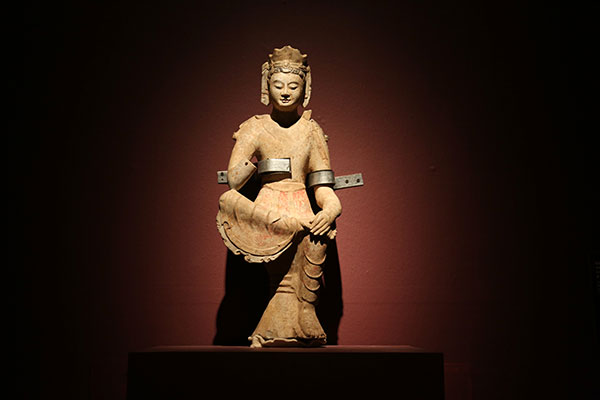Qingzhou's trove
 |
|
[Photo provided to China Daily] |
The statues, Yang says, were made of stone, jade, iron, wood and clay. The highest is 3.2 meters. They boast varieties of sculpting techniques and ornaments, providing extensive information for both archaeologists and art historians.
Many of the images were subject to damage of varying degrees - repaired and destroyed again as scholars speculate that the statues fell victim to two wholesale persecutions of Buddhism in China. The first was during the reign of Northern Zhou (AD 557-581) Emperor Wu, who ordered Buddhist and Taoist temples destroyed because he felt people were spending too much time in them.
After the Sui Dynasty's (AD 518-618) founding Emperor Yang Jian took power, the clergies of Longxing Temple restored the remaining statues and sculpted new ones. But the sculptures of great artistry were destroyed when Emperor Wuzong of the Tang Dynasty (AD 618-907), himself a devout Taoist, abolished Buddhism in the country.
The statues were possibly buried after people found it impossible to repair the damaged ones and buried them in the storage pit around 1026.
Zheng says the remaining statues and broken pieces were placed in some order when found in the cellar, and it suggests that there could have been a burial ceremony. He says it was a way for Buddhists at the time to achieve relief after something disastrous.
